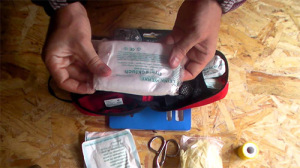A Guide to In-Home Care Emergency Preparedness
We become more vulnerable as we age; the older we get, the more our bodies break down and we are more prone to succumb to injury. For this reason, it’s important for the elderly and their in-home caregivers to be prepared for emergencies. The idea of hurting oneself attempting everyday activities that most able-bodied individuals can complete is often a source of embarrassment, and that can deter the elderly from being prepared for in-home emergencies.
However, this hesitation is dangerous; safety is more important than feelings of inadequacy. Here are a couple tips on preparing for emergencies for elderly and in-home long-term care providers.
Preventative measures: A big step toward in-home emergency preparedness is recognizing all the threats in and around the home. The number of threats we face every day is wide-ranging, and there’s no way we can be prepared for everything, but common sense goes a long way. For instance, if you live in an area prone to earthquakes, it’s a good idea to store emergency-preparedness kits consisting of food, water and first aid supplies in your home. Recognizing electrical hazards could prevent fires. Regular exercise is also a great preventative measure, since it keeps us healthy (e.g. we’re less likely to suffer a heart attack) and reduces the effects of aging on our bodies. Learning CPR is another vital skill for keeping others alive.
Emergency information cards: In the case of an emergency, information given to a care-provider can be the difference between life and death. Creating cards to store in a wallet, purse or backpack with information regarding emergency contacts, medications, allergies, immunizations and medical alerts will help caregivers and emergency service providers alike.
Create emergency preparedness kits: Emergency preparedness kits are valuable for any situation where transportation and communication becomes limited. Here some of the essentials that should be included:
- Three days supply of non-perishable food and water (one gallon per person at residence per day)
- First aid kit
- Blankets
- Clothing
- Flashlights
- Waterproof matches
- Toilet paper, sanitation wipes, hand sanitizer
- Copies of identification cards
- Cash
If creating an emergency preparedness kit seems too laborious, the Red Cross sells pre-made kits. After creating an emergency preparedness kit, make sure to store it in a dry place and make sure any paper items are stored in water-resistant, sealed containers. Annual upkeep is also recommended. It’d be devastating to open an emergency kit during a disaster only to find it unusable because of improper storage or neglect.
Learn escape routes: In the case of a fire, earthquake, or other natural disaster, knowing the safest, quickest way out of your home can prevent injury or death. Make sure there are at least two escape routes (doors and windows) in every occupied room, and practice using them. If you don’t live on a ground level, make sure you have window ladders to use to leave the premises safely
Keep disabilities in mind: Emergencies for individuals with disabilities can be extremely difficult without the appropriate precautions. Wheelchairs, extra walking canes, and batteries for hearing aids should be stored and ready to use in the event of a disaster.



